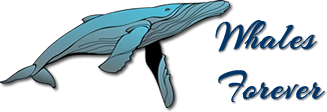Scientific Name: Mesoplodon bowdoini
Other Names: Deepcrest Beaked Whale, Splay-toothed Beaked Whale, Bowdoin’s Beaked Whale
The Andrew’s Beaked Whale is one of the least known whale species in existence. In fact, it has only been observed from strandings, of which there have been about 20. Interestingly, even these stranded animals have been incorrectly identified, since it is very similar to the Hubbs’ Beaked Whale. The teeth of the Andrew’s Beaked Whale are noteworthy, as they are broad and flat and situated on the top of the very arched mouth line. In males, these teeth protrude outside of the mouth, while they remain inside the mouths of the females and juveniles.

A beached Andrew’s Beaked Whale
By Ptilinopus – Own work, CC BY-SA 4.0
Physical Characteristics
Andrew’s Beaked Whales have a dark blue body that is rather robust in comparison to many of the other, more slender fusiform cetaceans. The bodies are often scribbled with white scarring and their beaks are predominantly white. The very small dorsal fin usually has a pointed tip but, in some cases, they have been found to have a slightly rounded tip. The tail fin, or fluke, has frilled trailing edges with no notch in the centre. In fact, there is a small bulge in the centre; the complete opposite of a notch.
The distinctive arched mouth line is a prominent part of this whale’s physical appearance. Its teeth curve outwards.
The adult Andrew’s Beaked Whale measures about four to 4.7 metres in length, which is equivalent to about 14 feet. On average, these animals weigh between one and 1.5 tonnes.
Behaviour
Because these whale species have never been spotted (or reported) in the wild, it is reasonable to conclude that the Andrew’s Beaked Whale is rather elusive and unobtrusive. Based on the scarring on the body, it may also be supposed that males fight one another in aggressive displays for mates.
Where to Find Them
The natural habitat of the Andrew’s Beaked Whale can only be presumed based on the location of the strandings of these whales. Strandings have occurred on the beaches of Australia, New Zealand and Tasmania. Therefore, it is likely that they live close to these coastlines.
Diet
Based on what has been found in the guts of the dead whale specimens that were stranded, the Andrew’s Beaked Whale feeds primarily on squid.
Threats
Threats to these animals are unknown due to the lack of information available.
For more information, please view: http://marinebio.org

